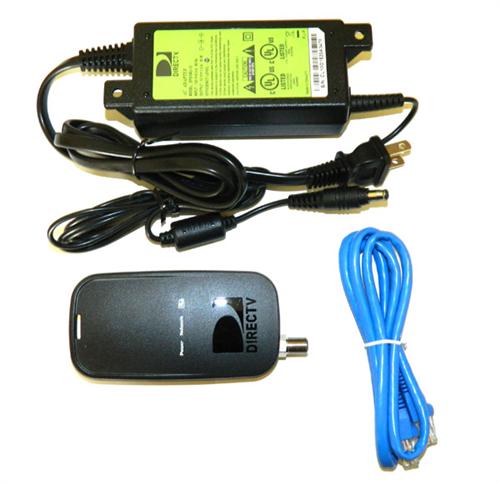I know what they told you when you bought the TV. Here’s the real story.
If you have a DIRECTV-Ready Smart TV (Here’s the latest list) you probably bought it with the idea that you can have a nice clean install with no receiver or extra little boxes to worry about. That’s a great idea, except for one thing:
Yeah, you kinda need an extra little box.
I’m sorry to be the one to break this to you, but the DIRECTV-Ready app within your TV will only work if you run a coaxial cable to the location where your TV is, and then use something like this kit to convert it to wired Ethernet.

I admit, this combination of little black boxes is probably not what you think of when you think, “Nice Clean Install.” But here’s the bottom line, and I really hate to be the one to break it to you.
You can’t connect to DIRECTV’s DVR over Wi-Fi.
You can’t connect to DIRECTV’s DVR over wired Ethernet.
It’s pretty much this or, you add a receiver.
I know, it’s a drag, but at least you have the real story now.
But… why? Why?
It seems like in this day and age you wouldn’t need to go through so much nonsense just to connect your TV to another network device, but there’s a reason. You, personally, may have the greatest home network known to man, with a super-clean commercial quality wireless network, but the average person doesn’t. The average home network is a real mess, and that can cause a lot of problems with DIRECTV’s systems. Unlike Netflix or other streaming services, DIRECTV doesn’t buffer. You get it live, or you don’t get it at all. So, if you’re going to get acceptable live TV performance, you need a super clean network. That’s why DIRECTV coax cable is used, on a separate network that isn’t affected by your home internet.
If only the manufacturers…
There are two ways that TV makers could actually make this better. They could build a second Wi-Fi radio into the TV and use it to connect to DIRECTV’s secure Wi-Fi network. That network is built into the Genie 2 and the Wireless Video Bridge. That would probably be the coolest way to do things, although it would be subject to some limitations as far as distance.
Another thing that they could do is build a network tuner right into the coax connection. This would mean that you couldn’t use DIRECTV and a TV antenna on the same TV, but for many people that would be a good compromise.
Of course these things would probably mean the TV would cost about another three bucks to make and so that would mean it wasn’t the cheapest TV in the row at Costco, and so that probably puts the kibosh on that plan.
So…
So obviously that TV install isn’t going to be as neat as you hoped, but truth is the DECA box isn’t that big, the wall wart can hide behind something else, and you don’t have to use the screaming blue cable that comes with it if you’d rather use a black one. At least it won’t be too obvious.





